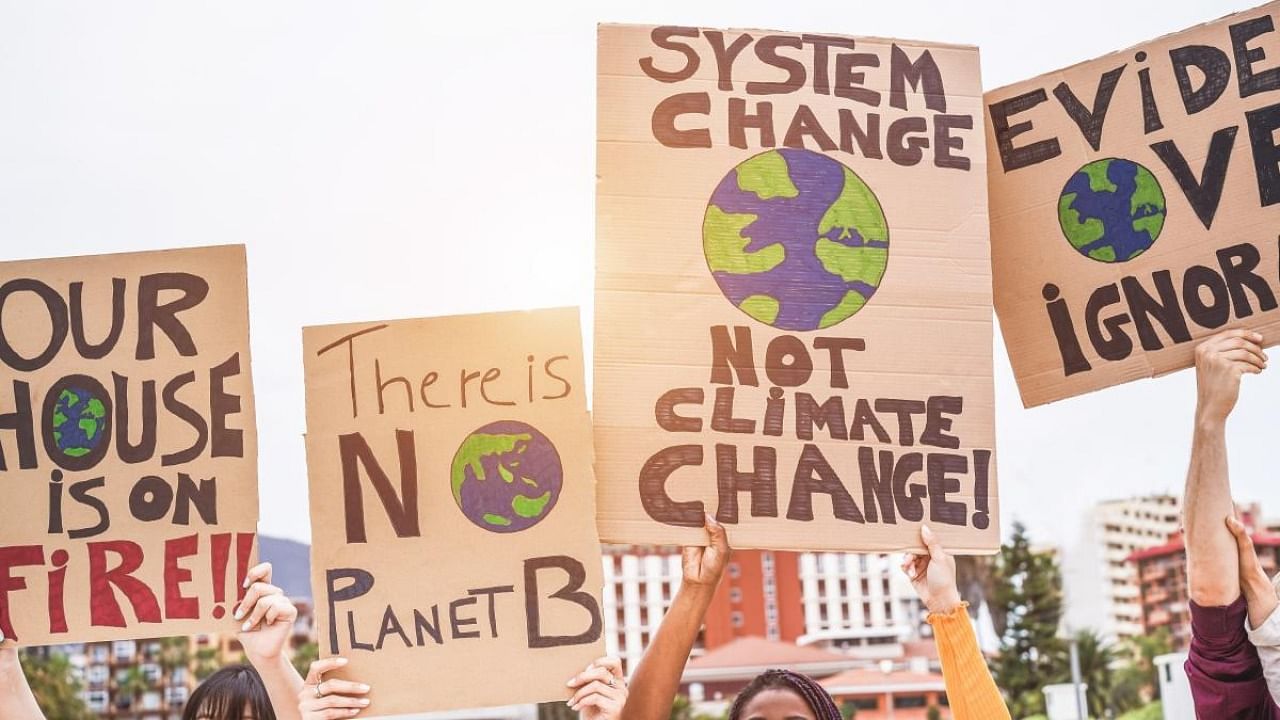
Back in 2007, the UN Development Programme’s (UNDP) Human Development Report issued a warning that remains prescient as the 26th UN Conference of Parties (CoP26) on climate change. As the world reels from the combined effects of a global pandemic and increasingly frequent extreme climatic events ranging from cataclysmic flooding, devastating droughts to raging forest fires, the question is whether global leaders gathered in Glasgow will commit to comprehensive climate action.
The 2007 report was categorical about the cost of global failure to act decisively: “Failure will consign the poorest 40% of the world’s population—some 2.6 billion people—to a future of diminished opportunity. It will exacerbate deep inequalities within countries…In today’s world, it is the poor who are bearing the brunt of climate change. Tomorrow, it will be humanity as a whole that faces the risks that come with global warming.” A few paragraphs later, the report highlighted that the failure to act cooperatively on climate change would “represent not just a failure of political imagination and leadership, but a moral failure on a scale unparalleled in history.”
It is time to acknowledge that the consequences of a global failure to act decisively have been known to, and will continue inexorably, to be borne by millions of people in the poorest households, communities and countries. Within the UN context, climate change was identified more than 30 years ago as a global challenge when the UN General Assembly adopted a resolution sponsored by the Government of Malta, recognising climate change as a “common concern of mankind.”
After decades of intergovernmental negotiations, the planet’s future was thought to have resided in the promise of the 2015 Paris Agreement (PA) which was universally acclaimed as the first fully inclusive yet completely voluntary climate accord. Three of the world’s largest aggregate greenhouse gas (GHG) emitters – China, the US, and India -- ratified the PA, which entered into force in November 2016. Interestingly enough, the PA is not a legally binding treaty holding ratifying countries accountable to their pledges. Instead, the PA hinges entirely on the level of “ambition” of the independent, voluntary, national pledges of climate action referred to as “Nationally Determined Contributions” (NDCs).
Now, as CoP26, which has been called the world’s “last best chance” on climate change negotiations, gets underway, failure is not an option. Can global leaders summon the leadership, discipline, trust and teamwork that is necessary or will they leave the world on the precipice of disaster represented by a moral failure of leadership on a scale unparalleled in human history?
On April 22, 2021 (Earth Day), US President Joe Biden made a historic announcement, setting a target for the United States to achieve a 50-52% reduction from 2005 levels in economy-wide net greenhouse gas emissions by 2030. The target is consistent with Biden’s goal of achieving net-zero greenhouse gas emissions by no later than 2050 and of limiting global warming to 1.5 degrees Celsius. Biden’s announcement was grounded in ambitions calling for clean technology infrastructure and innovation, and it was far-reaching in calling for fuelling an economic recovery that creates sustainable jobs and, equally importantly, seeks to advance environmental justice. It was meant to seal Biden’s legacy as a global environmental leader. But now, with his “Build Back Better Plan” whittled down to $1.75 trillion, and still no agreement in sight as he participates in the high-level segment of CoP26, what remains to be seen is whether President Biden can persuade other key aggregate GHG emitters to commit to scaling up action.
China published its long-awaited NDC just days before the start of CoP26. China’s emissions are expected to peak by 2030 and be reduced to net-zero 30 years later. Compared to China’s 2015 NDC, modest progress has been tracked. But Chinese President Xi Jinping will not be attending CoP26. Russian President Putin has also indicated that he will be a no-show. This means that all eyes are now on the role of India – the world’s third-largest aggregate GHG emitter — and Prime Minister Modi, who is attending the conference. India has not yet submitted its NDC, so it is still unclear what India’s commitment to climate action will be.
Meanwhile, the ClimateActionTracker.Org has released a list of countries that have signalled their intent to not update their 2030 NDC targets or have signalled that they will only re-communicate their existing NDC with no significant change in emissions ambition. The list includes Australia, Brazil, Indonesia, Mexico and the Russian Federation -- all of whom are significant aggregate GHG emitters. So now, all those around the world who are watching and waiting to see the outcome of CoP26 need to ask a discomfiting query: Is failure an option that most global leaders have already decided on?
(The writer is a climate change and clean energy consultant)